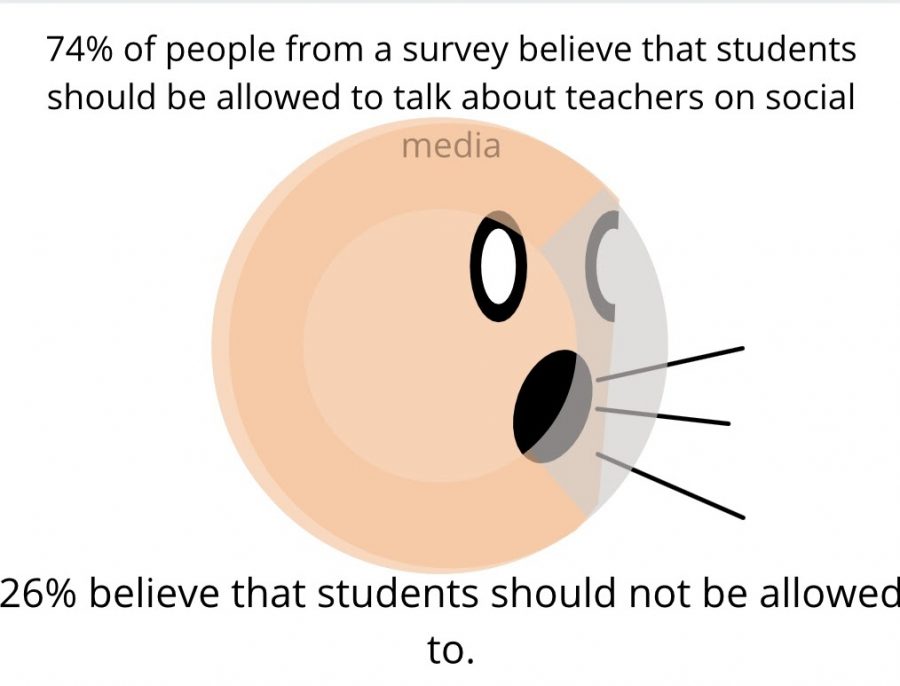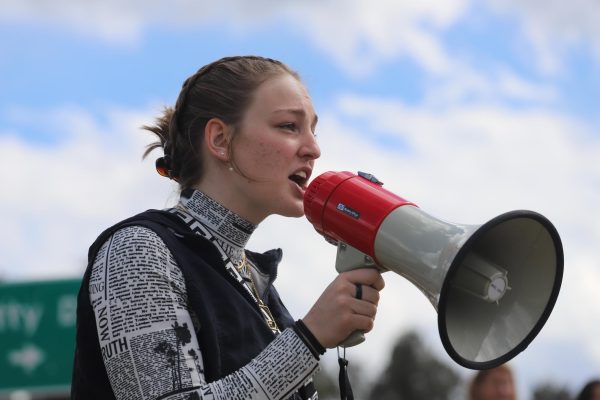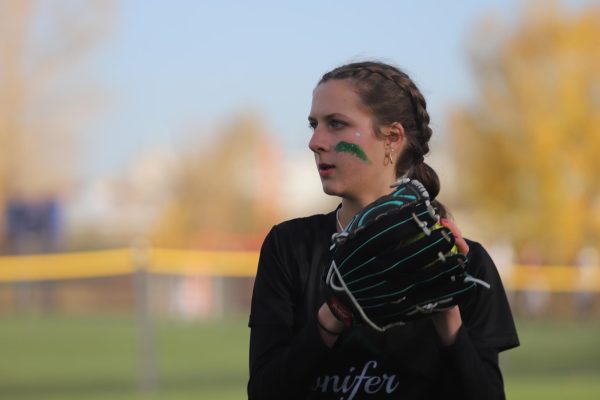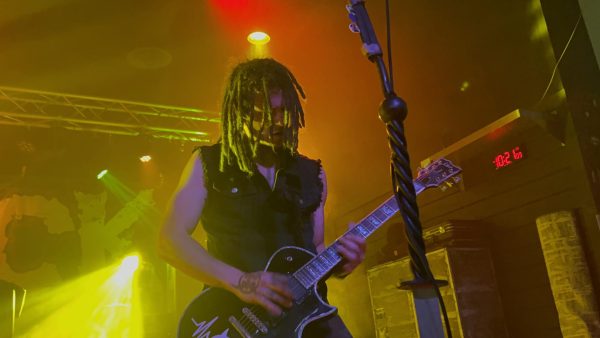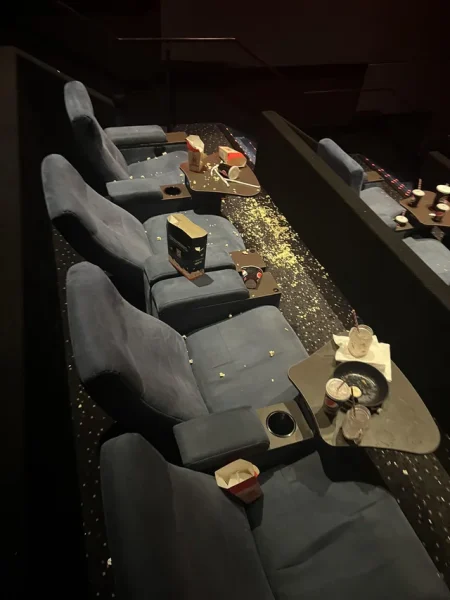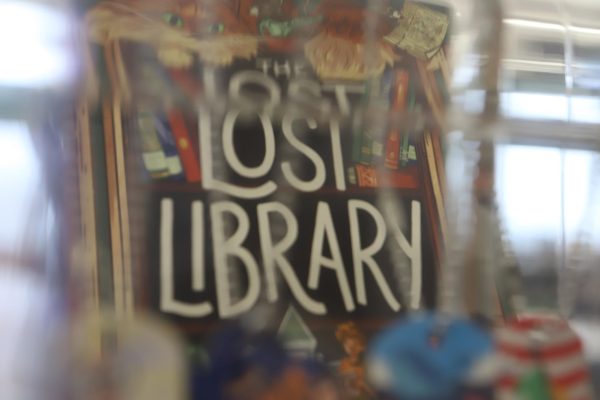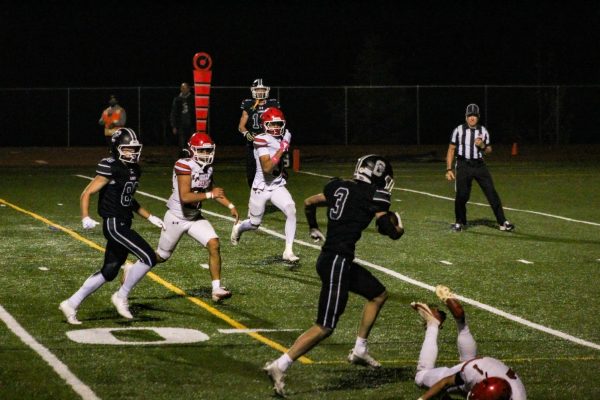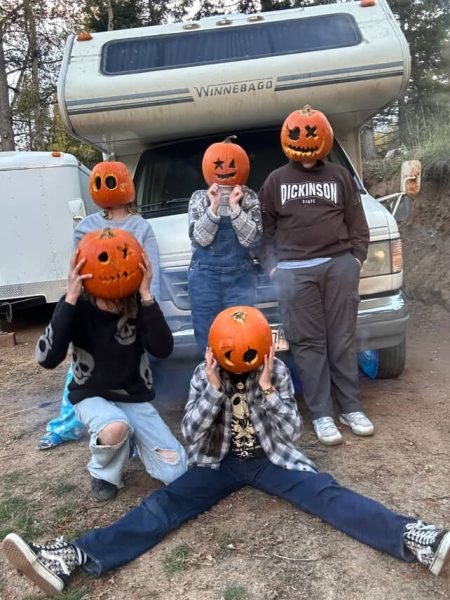Students’ First Amendment Rights At Risk
Mahanoy Area School District vs. B.L.
poll created to see how many students think it’s okay to talk about teachers on social media. Over half the people who voted believe it’s okay to talk about teachers.
@$!* school, @$#! softball, &%!@ cheer, !$#% everything. In March, a fourteen-year-old cheerleader went on her social media and cursed out her coach. The young girl was practicing her constitutional right, however, it created quite the uproar.
It created the Mahanoy Area School District vs. B.L case. People have begun to argue that young adults use their first amendment right imaturally; in this case, to talk about an adult negatively on a large platform, but the debate on whether the First Amendment is being violated for students has been on the rise.
“I believe it’s impolite. Adults don’t often talk about their bosses on social media so the same standards should be held for students and their teachers. Students should be held accountable. If you’re willing to say stuff on social media then you’re willing to suffer the consequences,” junior, Story Talbert, said. “I believe it’s more of a responsibility thing. Not all students are going to like all teachers, but part of growing up is realizing this and having respect.”
On the other hand, some students believe that it’s okay for students to talk about their teachers. Some people say that making it so that students aren’t allowed to will take away their first amendment rights. Some students also say that it’s okay, as long as it doesn’t overstep and get the teachers in trouble.
“I believe you can say whatever you want whenever you want. It’s our first amendment right,” sophomore, Caiden White, said. “Are there boundaries for what’s respectful and what’s not respectful, yes, but there is also a fact that you need to earn your trust for each other.”
Students hear all the time that they need to be careful with what they say and post on social media. One bad post can ruin a lot, such as friendships or even jobs. Part of living in America is having the right to say what you want, but from that one has to learn what’s okay to say and what’s not.
“I think one of our rules as teachers is to help guide students to make appropriate choices about what they should and should not post publicly,” high school science teacher, Jessie McFadden, said. “Part of me feels like it’s our job as educators to help students realize the consequences of saying things in a digital way.”
This case is a small fragment of some bigger issues and questions. How much of a student’s social media should be monitored by schools? When do schools invade a student’s personal privacy? Students use social media to display their lives, but now people are starting to debate on whether or not it’s okay for schools to dig into a students life outside of their classes.
“I have thought about this case long and hard. I am kind of a hard liner when it comes to following rules and being respectful, but I think it’s an overreach to go into a person’s private life,” high school journalism teacher, Leslie Thompson, said. “I just think it’s wrong.”
While some say it’s an invasion of privacy, others say it’s important for schools to be aware of when a student is posting anything bad. Take cyberbullying as an example. It’s an issue one which schools will handle, but now if they can’t see the bad things a student is posting, there is no way for a school to handle cyberbullying.
“I think it is invasive,” high school S.P.E.D para, Celina Fischer, said. ”Unless a student’s page has been reported for things such as cyber bullying or deemed inappropriate, there is no reason for a school, whether it be high school or future college, to follow a student’s page or use it against them.”
The case is currently facing the Supreme Court, after the school district sued B.L. While several people stand with B.L. the final say is all in the hands of the court. The court arguments on this case were held on April 28, and the court decisions will be handed down until mid summer, with the traditional date being around June 25.
